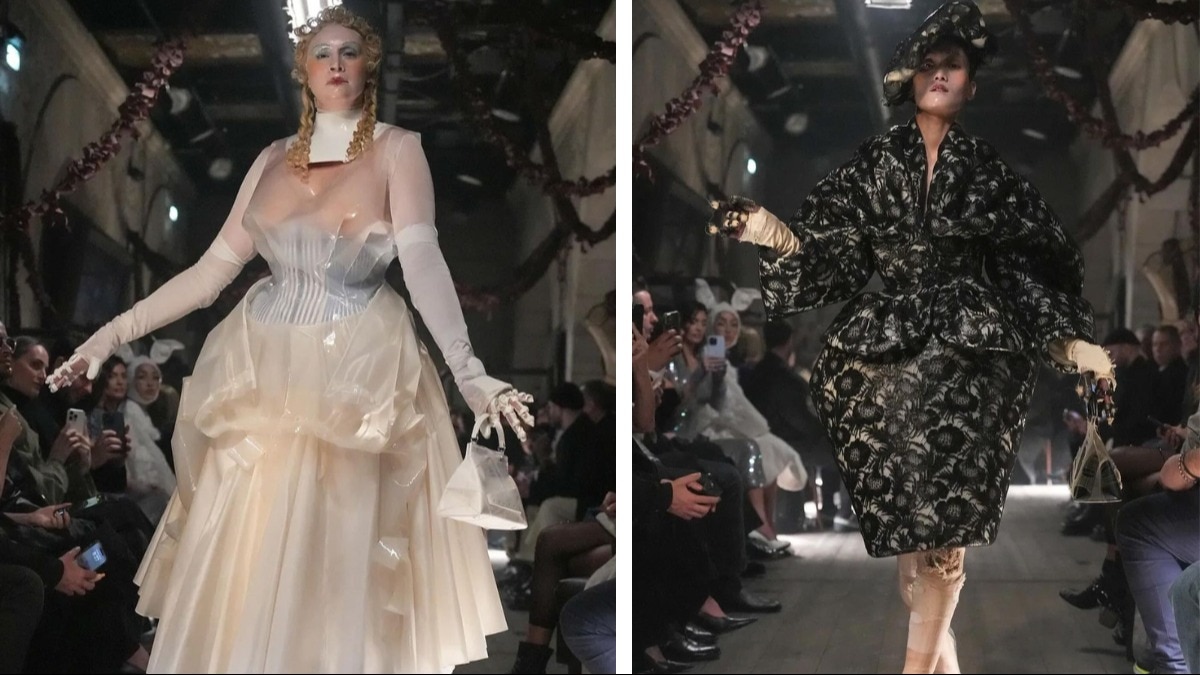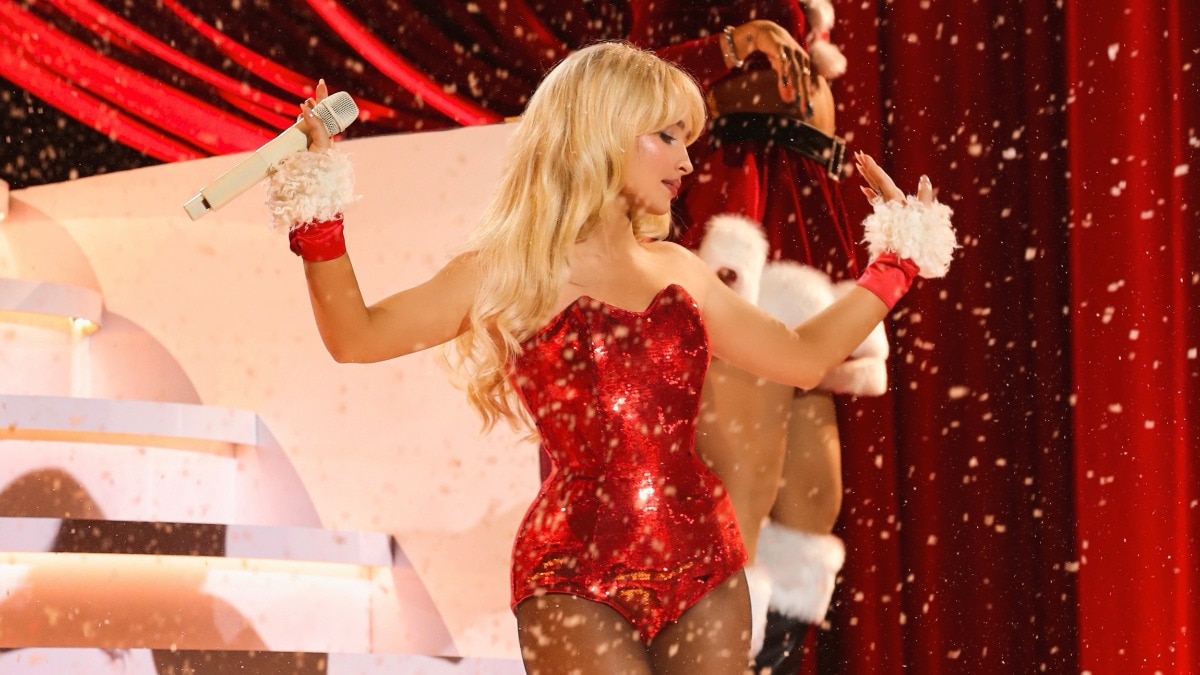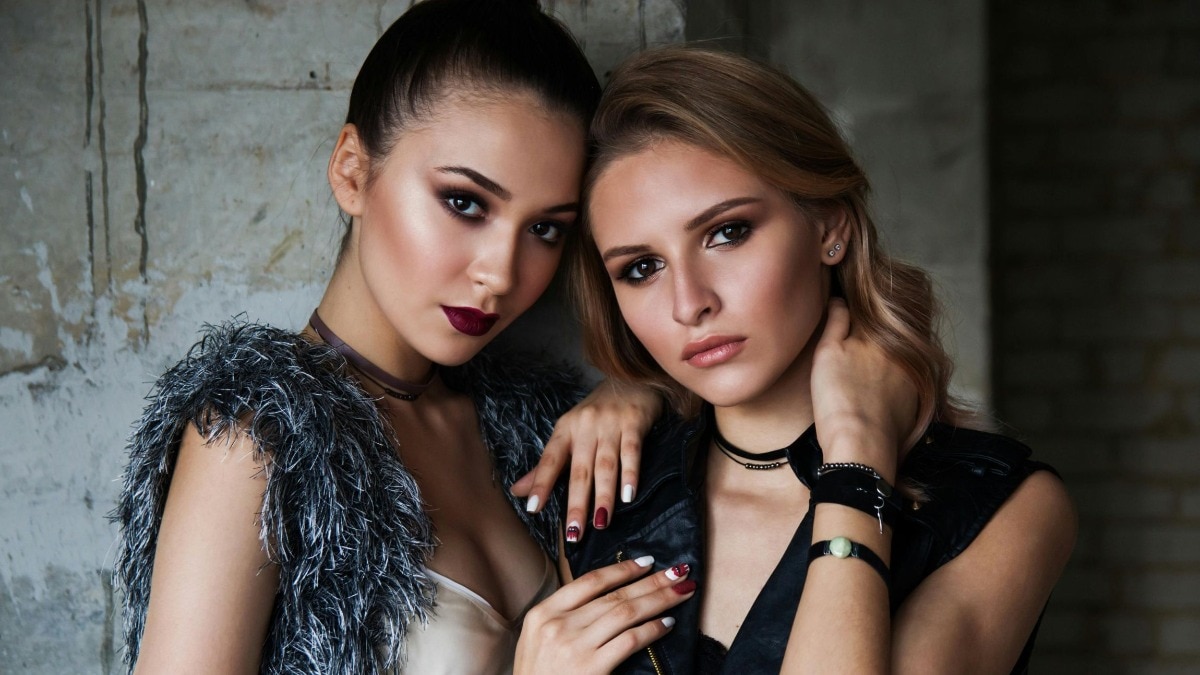
John Galliano returned to his roots at Margiela
The designer tapped into late-19th-century Paris and reinvigorated everyone’s love for fashion.


When I saw the first clip of John Galliano’s most recent couture show for Margiela, I assumed it was an old video from the ’90s. A model was teetering off-kilter down a dimly lit street, her arms flailing as if attached to puppet strings. She wore a voluminous white blazer, with a black ribbed net wrapped around her like a web. The whimsical, ample silhouettes; the over-the-top drama; the sense of spectacle—it all looked like the kind of show Galliano was famous for staging in the days before the internet took over.
But then I saw another clip of the same scene, with model Leon Dame clutching at his lapels while sprinting down the street-as-runway. And then another of actor Gwendoline Christie, face painted like a porcelain doll, wearing a clear, tiered latex gown. As it turns out, the show had not taken place decades ago, but just yesterday in Paris, on the last night of Couture Week in the year 2024.
It reminded me of something fashion journalist Dana Thomas said in her book Gods and Kings, which chronicled the rise and fall of the late 20th century’s two biggest titans of fashion: Alexander McQueen and John Galliano. “With Galliano,” she wrote, “you got a sense of the flamboyant possibilities of fashion—beautifully absurd, he intoxicated us with excess. And there was always a fusion and a dissonance between the present and the past as if you were witnessing fashion history through the immediacy of the moment.”
I grew up watching Galliano’s wildly theatrical shows years after the fact on YouTube, always with a tinge of bitterness. They made me feel like I’d been born into the wrong generation—what I wouldn’t have given to have been there, witnessing those scenes in real-time, nothing but a notebook on my lap! In any event, that giddy era came to an end in 2011, when Galliano was ousted from Dior after a drunken antisemitic outburst. After several years working with Jewish organisations and undergoing rehab, he quietly took over at Margiela in 2014. His talent remains undeniable, but, perhaps as penance, he’s stayed out of the spotlight.

But all of that changed last night. The Margiela couture show went instantly viral, which is almost ironic given the final sentence from the show notes: “Would you like to take a walk with me, offline”.
Yet, the 30-minute show, which began with a short film by Baz Luhrmann, was extremely online. When I watched it after the fact (still on YouTube, unfortunately, although it did feel a little more magical knowing it had happened in a timeline in which I am alive and conscious and very much gagged), I immediately noticed all the phones. The models swanned down the runway wearing frozen, doll-like facial expressions, surrounded by glowing screens on all sides.
Despite being exactly the type of thing everyone wants their own footage of—to point at in a crowded bar, months from now, declaring, “I was there!”—the show didn’t feel flattened by the algorithm. Even on my phone, it seemed alive, with fashion so visceral, it made me feel present in my own body. Watching it wasn’t like watching a film, but feeling as though I had been devoured by one.
It wasn’t just the staging; the clothing itself was transcendent. That’s probably because in the 12 months Galliano spent designing the collection, he managed to introduce a handful of brand-new couture dressmaking techniques. One, “retrograding,” uses variations of thread-work, appliqué or encrustation to mimic the degeneration of detail that results when an image is re-created. Another, “emotional cutting,” is exactly what it sounds like: a way of slicing through fabric that, Galliano says, infuses the garment with the unconscious gestures that influence our expressions. (The press release specified that Margiela’s signature gestures are “dressing in haste,” the “bourgeois gesture,” and “unconscious glamour.”)
The designer described the show as “a walk through the underbelly of Paris,” which might remind some people of his controversial collection inspired by the French capital’s unhoused population, which almost got him fired at Dior back in 2000. But this time, he was gesturing at a much-referenced historical era: the late-19th-century Paris of prostitutes and gamblers. The show looked like a breathing Toulouse-Lautrec painting, with nipped-waist silhouettes, full-skirt sheer dresses, and elaborate Edwardian hats that called to mind the shapes from Galliano’s Dior Fall 2005 couture show.

To me, it felt that yesterday’s characters were personalities of the night—people who could exist only in a city like Paris, with unconventional lives and jobs and stories, coming together in a decaying nightclub to revive a period that no longer existed and revel in one another’s misunderstood company. Legendary makeup artist Pat McGrath gave the models glassy, porcelain skin, making them look like dolls and hinting that this kind of louche bohemianism is something we can all play with but can’t always become.
Some models held themselves in their own embrace; others careened their arms like bird wings. And in the audience, too, there was movement. Instead of the usual stone-cold pursing of lips, grins slid against cheeks and feet beat against the floor in excitement. At home, I made the same expressions. Fashion hasn’t felt like this for a very long time. Let’s hope this is the start of something new, and not just a quick nostalgic dip into a past long gone.










